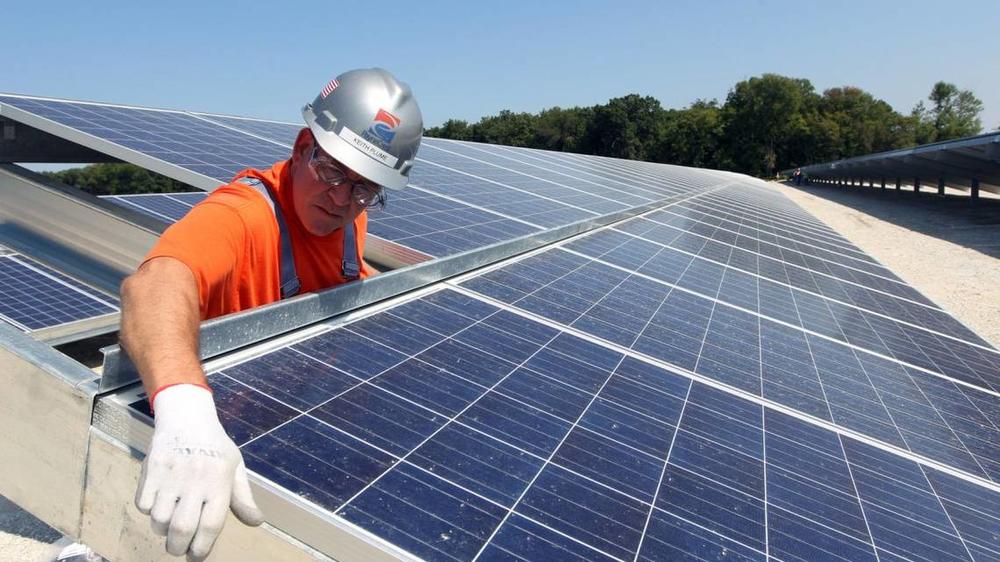
Caption
Keith Plume of PayneCrest Electric Company checks that solar panels are lined up correctly at the Ameren O’Fallon Renewable Energy Center in O’Fallon, Missouri on Sept. 18, 2014. Georgia is among the nation’s leaders for solar manufacturing this year.
Credit: Bill Greenblatt UPI
